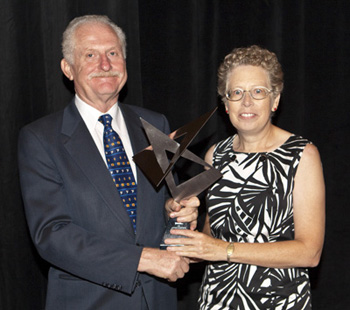2010 News & Events
CSD Team Wins National Instruments Award for UAV Ozone Instrumentation
18 August 2010

Laurel Watts, a CIRES engineer at CSD, led a team that has been awarded the 2010 National Instruments "Graphical System Design Achievement Award" in the category of Wireless Monitoring. The team also won the Editor's Choice Award, which recognizes the editor's top selection across the eight different categories of the Achievement Awards. Over 100 nominations from 20 countries were considered for the awards.
The award recognizes the team's development of a light, rugged ozone instrument for use on Unmanned Aerial Vehicles (UAVs) such as the NASA Global Hawk. The instrument, a dual-beam ultraviolet absorption spectrometer, uses wireless technology for its operation and real-time communications to the ground. The instrument was successfully field tested aboard the WB-57 piloted aircraft in Houston in 2008 and then deployed in its inaugural UAV field missing during spring 2010 in the first NASA Global Hawk Pacific mission, based out of Dryden Flight Research Center in California. The instrument proved capable of collecting ozone data in unpressurized environments at altitudes of up to 64,000 feet.
The Award recognizes CSD scientists and engineers Watts (lead), Steven Ciciora, Troy Thornberry (CIRES and CSD), David Fahey, and Ru-Shan Gao. The National Instruments "Wireless" award category recognizes applications that use wireless technology to remotely monitor and control electrical, physical, mechanical, and acoustical signals.